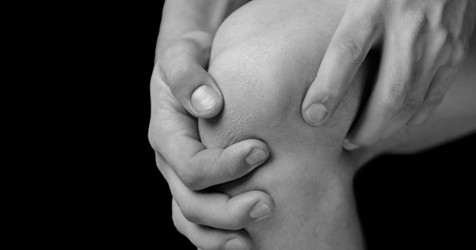ACL Injury
The knee is the most utilized joints in sports. Injuries to the knee are the most devastating and difficult injuries to recover from. The knee joint is also the largest joint in the human body. It is made up of the femur bone that joins a flat bone called the tibia. Those bones are held together by various ligaments. The ACL, anterior cruciate ligament, is often injured during athletic contests and is considered one of the most common sports injuries. The ACL runs from the front of the tibia to the back of the femur, preventing extreme rotation of the knee joint. An athlete quickly changing directions while in motion or hyperextending the knee often tears the ACL.
Treatment includes immediately splinting the leg in position, applying ice and light compress followed by reconstruction of the ligament with tissue from other areas of the knee andsurgical reconstruction of the ligament using anarthroscope.
Hip Fractures
Since hip fractures are considered an orthopaedic emergency, a benefit of treatment is relief of pain that results from the injury. Patients applying initial treatment for a hip fracture can control the movement of the painful limb. Applying ice to the injured area can also reduce swelling.
Based on your general health and current medications, your doctor will plan the best form of treatment for you. X-rays and CAT scans or Magnetic Resonance Imaging (MRI) tests enable your doctor to make an informed decision regarding treatment. Hip fractures most commonly require emergency surgery by an orthopaedic surgeon to restore bones to their original positions. During surgery, a surgeon may use metal devices to stabilize the bone and hold it in place. Metal rods and bone grafts may also be needed.
Total hip replacements are sometimes performed for hip fractures if pain is severe enough to restrict daily activity, pain is not relieved by anti-inflammatory medicine for arthritis, and the patient has advanced arthritis or significant stiffness of the hip. Based on your medical condition, your physician will determine if total replacement is the best treatment option for your hip condition. Total hip replacement may offer relief for patients who suffer pain and the loss of motion in the hip.
Total Hip Replacement
Total hip replacement (or hip arthroplasty) is a technique that has become widespread in recent years in response to the need for improving hip joints that have been damaged by injury or arthritis. Joint replacement surgery may offer the best treatment option for long-term improvement for the hip joint when other treatments have proven inadequate. In most cases, having a total hip replacement reduces joint pain and means a return to pain-free movement.
Hip Revision
Hip revision surgery is performed to repair an artificial hip joint (prosthesis) that has been damaged over time due to an infection, or due to normal wear and tear of the prosthetic hip. Revision surgery helps to correct the problem so the hip can function normally again. The use of artificial hip implants is extremely effective in improving hip joints that are damaged by injury or some form of arthritis.
Knee Arthroscopy
Knee arthroscopy is one of the most frequently used procedures for the diagnosis and treatment of knee injuries. This minor surgical procedure is done using an instrument called an arthroscope. While the knee is the joint most often viewed and operated using the arthroscope, other joints such as the shoulder, elbow, ankle, hip and wrist can also be viewed using this instrument. Knee arthroscopy is an effective tool in diagnosing your joint condition and for confirming treatment for knee problems such as meniscus tears and cartilage wear. An arthroscopy can ultimately provide relief from knee pain and improve mobility.
Total Knee Replacement
Knee replacement surgery is performed to treat advanced or end-stage arthritis. When arthritis in the knee joint or joints had progressed to the point where medical management is not effective, or deformity has become severe and debilitating, knee replacement surgery might be indicated. Knee replacement surgery is designed to replace the damaged articular cartilage or gliding surface and any associated loss of bone structure or ligament support. The procedure itself is a resurfacing of the damaged knee, and relies on the patient's muscles and ligaments for support and function. The prostheses (replacement knees) come in numerous configurations designed for replacement of specific patterns of advanced arthritis.
Other procedures performed by the expert team at KIMS include: Chondral grafting, Meniscal repair, Cruciate ligament surgery, Complex poly ligament reconstruction, Osteotomy of the knee and Management of soft tissue injuries of the Hip and Knee.













